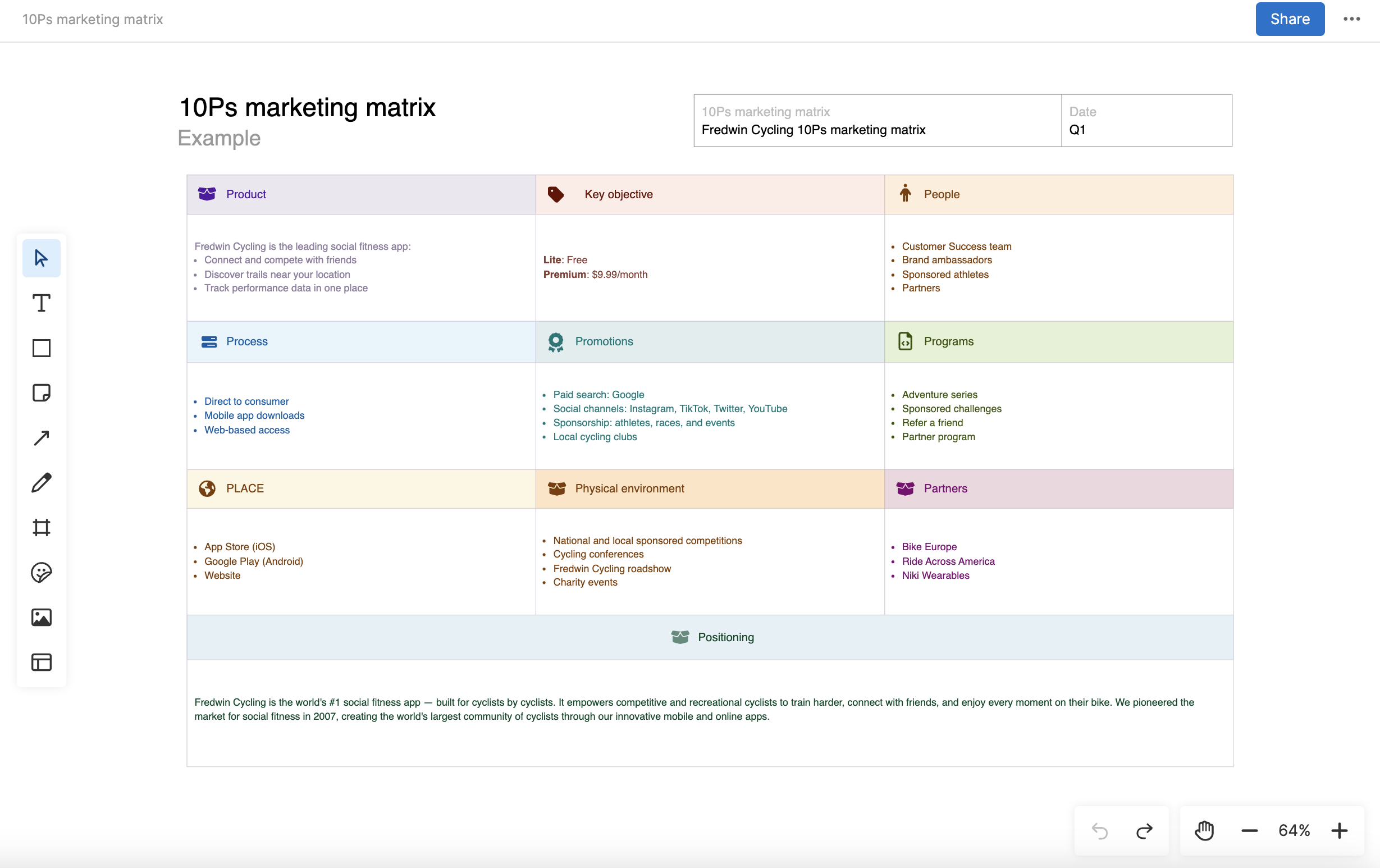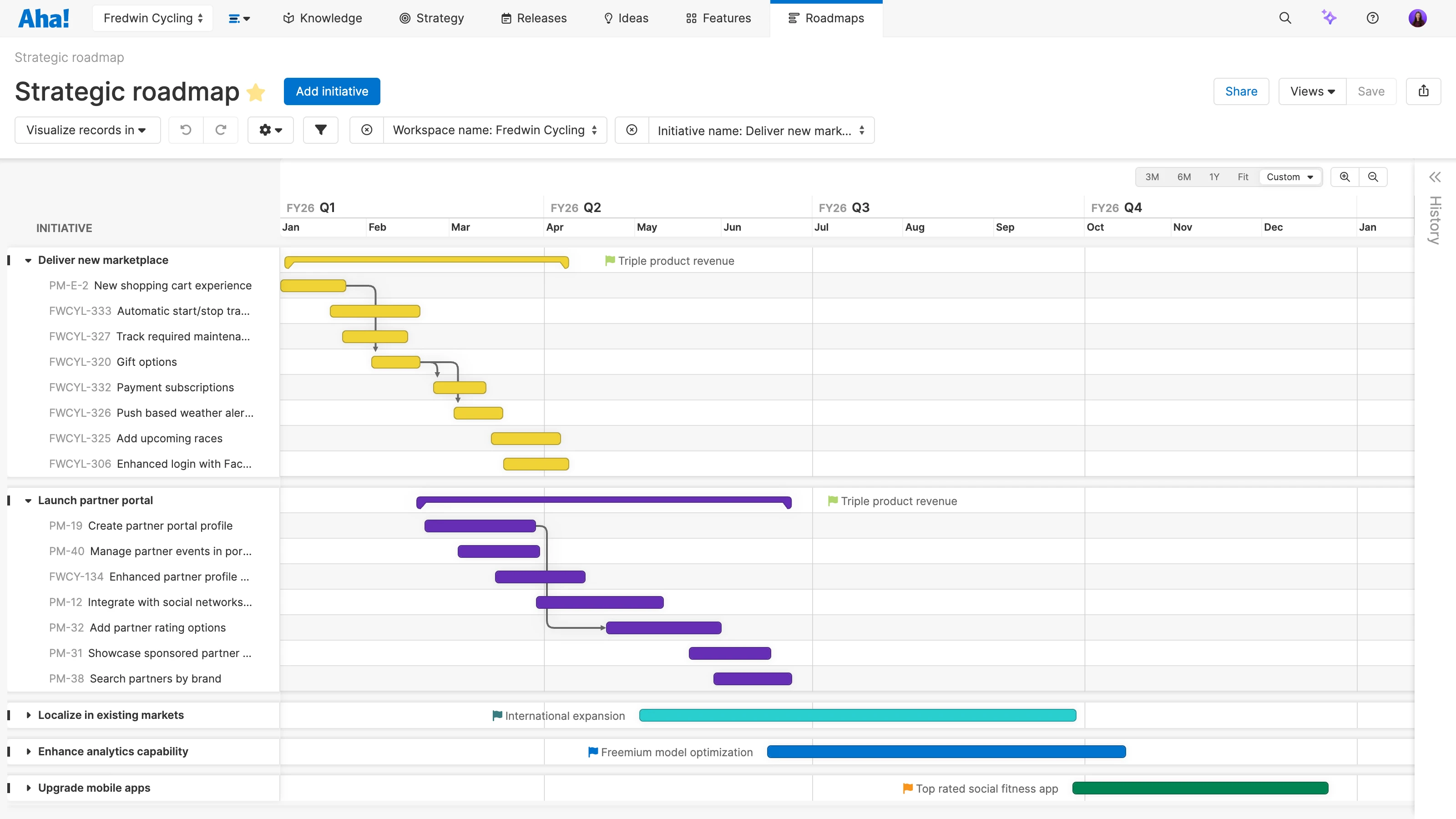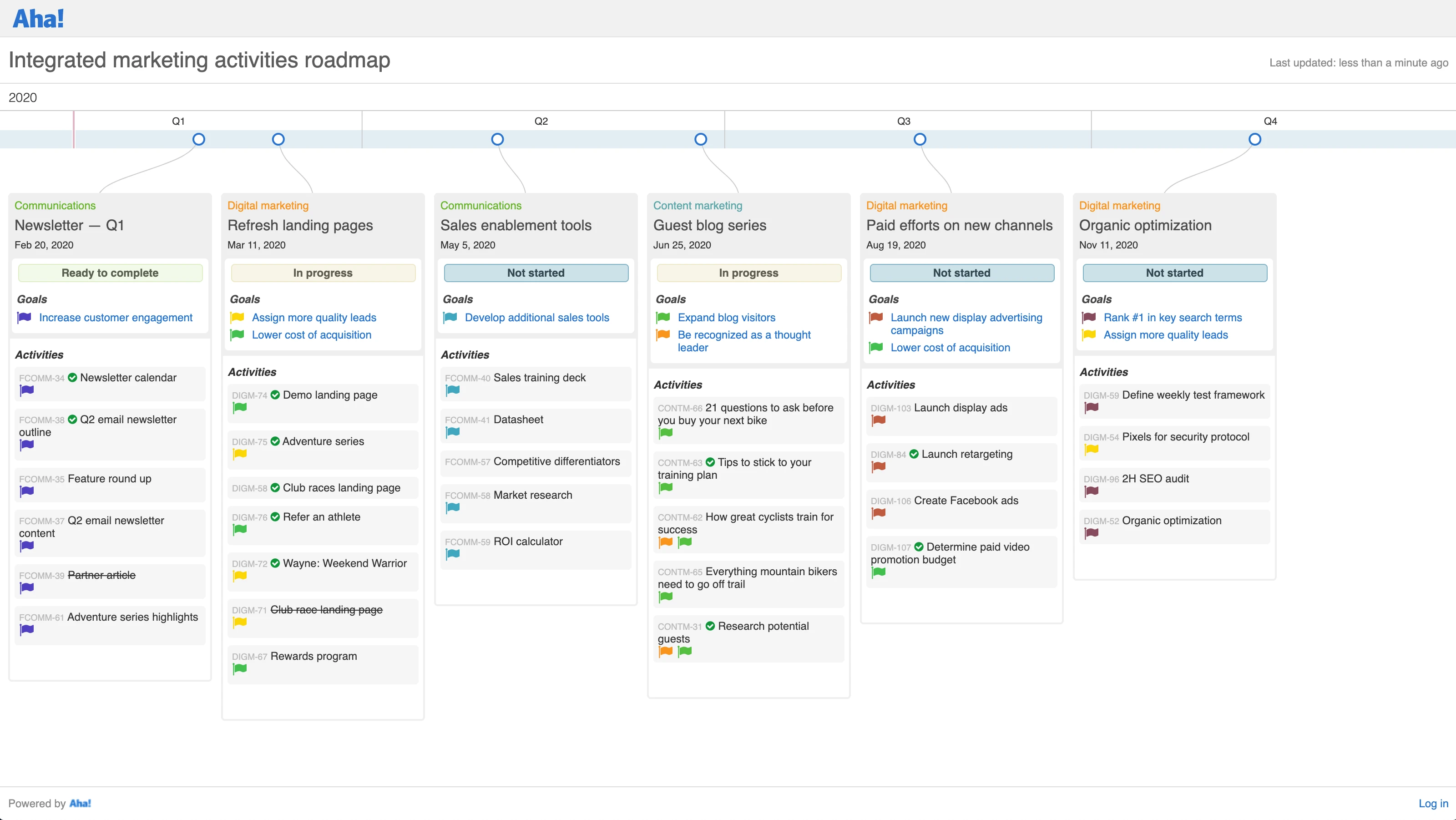How does advertising support a marketing plan?
Marketing teams have all sorts of options for paid promotions. The challenge is determining where to invest and what results to expect. Choosing an advertising mix starts with building a comprehensive marketing plan.
A strategic plan helps you focus your efforts on the right audience, messaging, content themes, campaigns, and promotions. A core part of your plan is determining how much budget to allocate towards advertisements and paid promotions and which channels will help you best reach your audience.
Direct mail | Direct mail is a method for delivering hard copy promotional materials. Brands can send printed materials, postcards, or even promotional products to high-value prospective customers. |
Display ads | Display and banner ads are like digital versions of print ads — facilitating visual interest and brand awareness. |
Event sponsorship | Sponsorships provide brand exposure. Options may include sponsoring a booth at a live event, speaking at an in-person or virtual conference, and displaying ads onsite or in event materials. |
Influencer programs | Paying influencers to post content continues to be a major area of investment for many companies — to get the product in front of new audiences and build brand recognition. |
Out-of-home ads | Out-of-home or outdoor advertising includes any visual advertising people see outside of their homes — ranging from billboards to ads in airports, stadiums, bus stops, and other public places. |
Paid social media | Paid social media ads and "boosted" posts are available on major social platforms, including Facebook, Instagram, LinkedIn, and Twitter. |
Pay-per-click ads | Pay-per-click (PPC) ads drive web traffic — brands pay for the instances when a visitor clicks. Paid search is the most popular type of PPC ad. |
Print, radio, and TV ads | Advertisements in newspapers, magazines, radio, and television are more traditional. While there are many new digital channels to choose from, major brands still reach potential customers this way. |
Promoted content | Content marketing is used on paid and non-paid channels. Examples of paid content distribution include search engine marketing (SEM), content syndication, and sponsored editorial content. |
Retargeting | Retargeting ads are a way to serve online ads to people that have already visited your website — typically by using cookies to show specific ads based on the pages visited. |
Video ads | Advertisements on video platforms like YouTube continue to grow in popularity. Preroll ads automatically play at the start of selected videos — when the audience is attentive and highly engaged. |
What is most effective for some brands may not be the best use of dollars for yours. You want to choose a mix of the above that will provide touchpoints across the entire buyer journey.
For example, display and search ads help build brand awareness — sending visitors to your website. Retargeting ads expand on that initial awareness by engaging returning web visitors. Social media ads that promote a free trial or product demo can generate new leads or sales opportunities.
How do you create a strategic advertising plan?
A strategic ad mix starts with understanding your prospective customers and the market that you operate in. Revisit your goals and buyer personas. Understand the "why" and "what" of advertisements before you jump to the "how." Get clear on the following:
Goals: Establish goals with specific, measurable targets. Are you trying to increase website traffic by a certain percentage or generate a particular number of leads? Make sure you know how you will measure your return on advertising spend — in order to evaluate campaign success.
Target audience: Determine which audience segment you want to attract. Research the social platforms they use, media outlets they read, and other places (on- and offline) they spend their time.
Competitors: Observe how other brands in your market utilize ads. This is an easy way to identify messages that resonate or to find gaps that your brand can fill.
Messaging: Refer to your marketing strategy and content marketing plan to select messages and content types to use in ads. Effective ads rely on experimentation. If an ad is not getting results, it may be time to change your messaging or check variables like ad type and audience targeting too.
Timing: Ad platforms allow for all kinds of customizations so you can find the right day, time, and frequency that works for your audience.
How should I incorporate advertising into a marketing roadmap?
Marketing teams use roadmaps to communicate the direction of campaigns and programs across channels. You can incorporate advertising efforts into the roadmap to communicate to internal teams when you will deliver different ads to different audiences.
Here are three examples of how you can represent advertising efforts on your marketing roadmap:
Strategic marketing roadmap
A strategic roadmap visualizes the status of high-level marketing initiatives and the related work that will drive them. Use this type of roadmap to illustrate how a paid ad program can impact broader goals and areas of investment. This may be particularly helpful during marketing budget discussions.
Go-to-market roadmap
A go-to-market roadmap is useful when launching a new experience to customers. Use this roadmap to show the cross-functional dependencies between the design, content, and product marketing groups — and determine the work needed to support ads that will accompany the launch.
Marketing activities roadmap
This roadmap displays planned work activities — including ads, blog posts, emails, and social media. You can communicate the progress of upcoming campaigns to internal teams. For example, inform the sales team about the planned paid advertising channels you will use to generate leads.
Build marketing plans like you always wanted. Sign up for a free 30-day trial.



